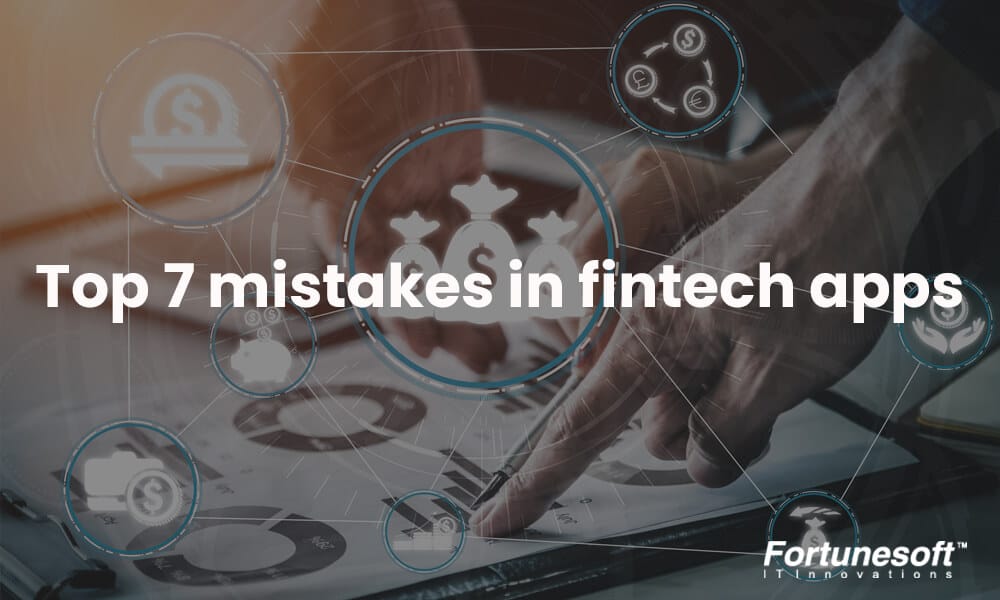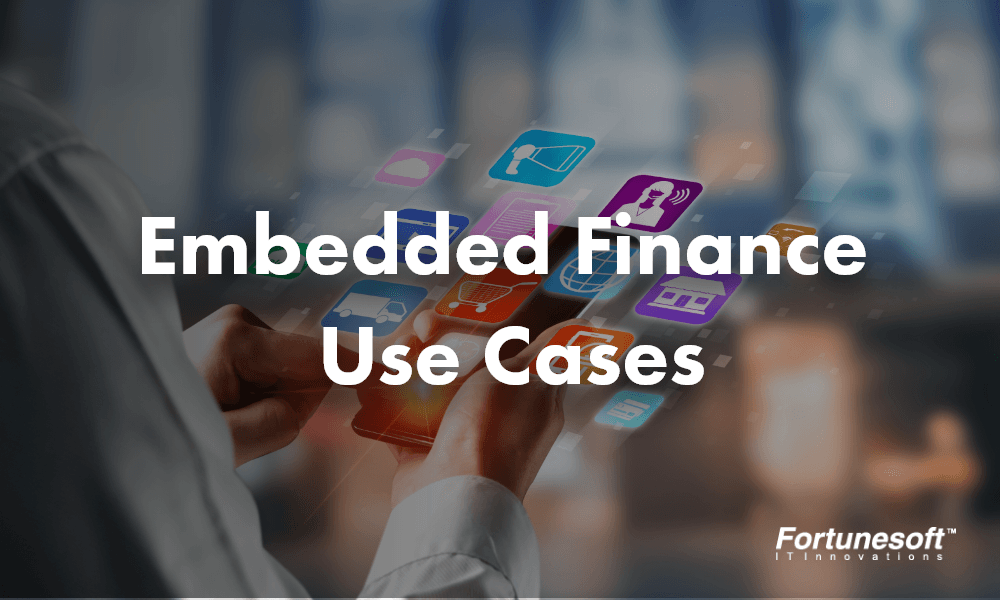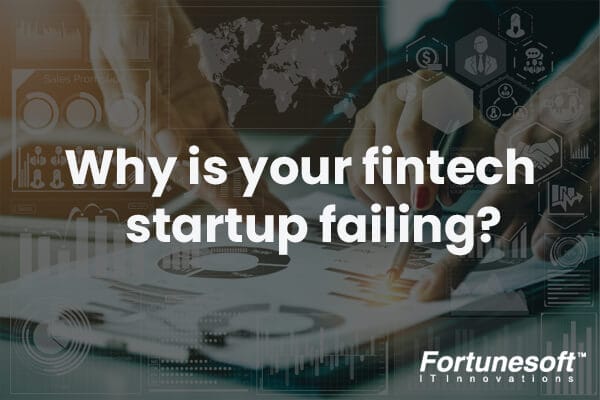 By Deepu George September 29, 2020
12 min read
By Deepu George September 29, 2020
12 min readFinTech disruption – 10 Innovative ways to revolutionize the financial ecosystem
Financial services have been growing exponentially, shaping the industry more as an enabler than a provider. Yet, traditional banks offer various financial services to customers through conventional models. FinTech startups are investing in cutting edge technologies to change these conventional models. They are trying to penetrate technology disruption with Artificial intelligence and Machine Learning into the financial ecosystem for an organized process. Right from account creation to credit profiling, FinTech companies have left no stones unturned to flip the conventional methods in the financial industry in the long-run.
FinTech is revolutionizing financial inclusion and streamlining the processes through innovative practices. Leveraging the disruptive nature of FinTech and partnering to expand the services in a more personalized way is the new norm in the financial industry. Therefore, to acquire operational efficiency and respond faster to customers’ requirements, FinTech companies are moving towards mainstream investments to change the competitive landscape and leading the path of disruption through various FinTech business models.
The 10 FinTech disruptive models are listed below:
Business Lending Models:
Business lending has been expanding by adding new lending patterns. These lending business models provide a platform for investors to give money to pre-approved and verified borrowers.
There are two lending models:
Peer-to-peer lending- The lending is among two individuals, i.e., one individual borrows from the other.
Peer-to-Business lending- An individual or multiple individuals lends money to a business.
With AI penetrating financial services, online lending marketplaces have changed the way loans are funded and accessed. With these lending models, the requirement of a middleman is replaced by a broker website that connects and matches the lenders with the borrowers. Some of the popular business lending platforms are Funding Circle, Upstart, LendingClub, etc.
Though they charge a minimal fee, the benefits are more. These kinds of lending platforms relieve peers from a traditional loan application process and also cut the cost. Another benefit is that only by lending money, individuals can earn interest.
Mobile-first approach and Microlending:
Accessing financial services through mobile devices that too in vernacular languages has been increasing rapidly. Tech companies are leveraging the benefits of this opportunity to build digital solutions to bring disruption in the financial ecosystem. Nowadays, people are looking to get loans in minutes and apply for the same through their mobile phones. FinTech is witnessing this behavioral change and therefore is trying to strategize secure and robust mobile-first approach solutions to survive in this digital world.
Mobile-only lending or microlending is another big watch out this year. One of the best examples to witness this trend is Branch International who has taken microlending to an all-new level. It offers small personal loans through Android apps. Branch International with its mobile-based lending app is trying to reach first-time borrowers breaking through any kind of demographic and geographic barriers. They are dedicated to simpler, and seamless access and the customer experience in the finance domain.
All you need to do is download the app from Google Play, create your profile by filling out a simple form, and wait to get verified (for a less period) before starting to apply for loans. Once your profile is verified, you can apply for loans and receive the money in your account within minutes. Also, loan repayment isn’t problematic. You can simply repay through your bank accounts, debit cards, UPI, and so on. To get access to a larger loan, you need to earn credit scores by repaying the loans in a timely manner.
Data Science and Engineering:
FinTech is witnessing exponential growth by delivering high-end, cost-effective, and better decision-making applications built with cutting-edge technologies like data science and engineering for providing a seamless experience in lending, insurance, broking, and wealth management using Computer vision, Optical Character Recognition(OCR), and pattern recognition.
There has been the use of images, text, and voice as input data sources by various lending companies to provide precise decisions and experiences as compared to traditional banks. Now, moving ahead with the technology advancements, OCR is integrated through the scanning of documents and credit cards. In other words, the same data can now be collected in an optimized way and quicker as compared to the traditional counterpart.
Investing in data science is worth as this technology houses statistics, mathematics, data analysis, machine learning, and visualization and thus showcases a great potential to extract insights. In FinTech, a rich amount of possibilities for data mining can be assured due to digital services, leading to data science penetration. Overall, Data science and engineering have a vast potential to create an impact on financial services.
Neo-banks:
The more technology advances, the more individuals are looking for digitized financial solutions. They want to integrate new banking models that will lead to new options and compete with the legacy institutions. Such desires of the consumers gave rise to Neo Banks or challenger banks.
Neo-banks are offering the latest innovations and permitting access to third-party applications with permission from the account holders. Moreover, neo-banks provide access to entities like unbanked and underbanked, immigrants, freelancers, and independent contractors, and small businesses relieving them from bearing a monthly fee due to low account balances or lack of deposits and proper advice from larger banks.
Neobanks is focused on increasing customer engagement through innovative solutions in the form of new products and partnerships. They have the wealth of customer data. They follow the policy of the open-banking system and provide a platform for individuals to do their banking activity whenever they want irrespective of their location. In other words, Neobanks is heading the mobile banking revolution with seamless, responsive design and robust features.
Neobanks is an emerging trend in the finance domain meeting the ever-changing demand of the clients and consumers through nimble, agile, and responsive techniques creating greater potential for revenue and fostering relationships in the long-run.
Bank-as-a-Service:
Recently, banks have been witnessing a steady decrease in customer activities. Therefore, they are hunting for solutions that will provide them with additional revenue streams and reduce operational costs. Over the years, banks and FinTechs are said to be competing with each other. But, the fact is they are inseparable entities clubbed to provide better financial services. Therefore, some of the banks have come up with strategies that share their infrastructure and licenses with key financial institutions. This is known as Bank-as-a-Service (BaaS) where banks can earn some capital by sharing their licenses and infrastructure with FinTech companies.
With BaaS, fintech can achieve:
- Speed
- Stability
- Various functionalities in a shorter period
- Subscription fee model
In short, BaaS has a tremendous potential to reinvent operations and provide multiple benefits to both banks and FinTech. For banks, the operational and compliance cost will be reduced whereas fintech will be having a readymade cost-effective infrastructure and can market services and products at a shorter time. Undoubtedly, fintech is all set to disrupt banking with trending technology.
SaaS in FinTech:
The new trend that has been emerging and leading to a disruptive financial service is FinTech startups adopting the SaaS delivery model for cost-reduction and improvising quality of critical functions. With the SaaS business model, accepting online business loan applications becomes easier for FinTech lenders. Processing these loans is a matter of minutes and the money is issued to the borrower within 2-3 working days.
SaaS business model has helped in improving the agility and security of the existing revenue systems. Also, this business tool helps in seizing market opportunities. Leveraging the benefits of the SaaS business model, FinTech startups could swiftly match up to the changing business requirements as per the market and scale more or less as per the demands of the customers. With such benefits, banks have also started adopting and deploying the SaaS business model for some of their transactions.
Benefits and opportunities that SaaS brings for the financial industry:
1. Agility
2. Support for unstable business cycles and ever-changing demands.
3. Cost optimization, reduction, and predictability
4. Simplified data analysis
5. Operational control for web-based interfaces.
6. High-end automated security and controls
7. Data backups.
8. Assuring business continuity
Infrastructure cost reduction with Blockchain:
Fintech’s journey in this pandemic has been a roller-coaster ride. To provide customers a safe and secure transaction, fintech disruptive innovations are on the rise.
The capability of blockchain in fintech is undeniable and huge. It has introduced some of the best applications that cover payments, insurance, security, commodities exchange, investment, and wealth management. Blockchain is well-known as a cost-saving technology and has a great potential to reduce financial services infrastructure cost per year providing the possibility to replace legacy systems and infrastructure and significantly reduce IT costs.
Using Blockchain technology there is a possibility to reduce manual interference and processing. This provides the employees with the opportunity to focus on value-added activities. Financial institutions invest a lot of time in post-trade reconciliation and settlement. By employing blockchain technology, financial institutions can completely redesign these expensive processes reducing time and cost by sharing a common digital representation of asset holdings, monitoring the execution track, and clearing and settling all the securities transactions outside their legacy proprietary databases, without the need for a central database management system. Other applications of Blockchain in finance are claim management and for developing smart contracts.
Overall, Blockchain is an opportunity for the fintech companies to unleash the set of new capabilities for changing the face of how we collaborate and interact with financial services in a more secure and authenticated way.
Digital Wallets:
Digital wallets are disrupting the fintech ecosystem through mobile banking, lowering fraud rates, strong authentication practices, enabling faster transactions, and immediate P2P payments. Almost all the verticals like retail, BFSI, automotive, healthcare, transport, IT, education, and so on, are leveraging the benefits of digital wallets.
Digital wallets are one of the common top payment apps and their benefits are being leveraged by many fintechs for providing a seamless payment experience and simplified financial operations. Truely, digital wallets are the most famous example of fintech disruption.
Digital wallets are mostly used because they have zero-liability protection, additional security features like push notifications, alerts, transaction history, monitoring accounts, etc., user-engagement due to loads of offers and discounts, and world-wide adoption among retailers.
Digital wallet houses numerous types of digital payments like- QR payments, NFC payments, and using the phone number to pay.
Digital wallets are unique due to features like P2P payments, remittances, stock, and mutual fund investment, co-branded credit cards, and seamless wallet-to-wallet transfer with zero transaction fees. Digital wallets are PCI compliant FinTech applications and also follow state and federal laws including KYC, AML, and GDPR rules in their operative countries and regions.
Real-time transaction settlement:
There is an urgent need to replace the legacy B2B payment infrastructure. FinTechs are constantly exploring new opportunities to get a breakthrough with cutting-edge technologies to bypass the existing payment rails with a fast and transparent payment transaction system.
Though we are advancing in technology and innovations, settlement of payments in real-time still takes time. Trading in real-time is possible but paying and receiving securities instantaneously is still a matter of research. Thus, every day the balance sheets are filled with billions of dollars worth of securities. Moreover, there is a manual intervention in legacy systems for all the transactions adding risks and delays in the process.
Therefore changing the face of B2B payments requires an on-demand settling payment infrastructure that focuses on a shared, secured, and permission infrastructure where the movement of assets takes place across multiple ledgers. Moreover, the system should be able to support multiple currencies, securities, and processes covering all kinds of transactions whether internal or external. The system should be compliant with regulations and be able to convert to digital or cryptocurrencies and provide transparency to selected parties.
Real-time transaction settlement is currently gaining a lot of attention and is expected to scale more in this situation of distress. There is an urgent need for digitization of payments as contactless payments are the new norm.
Digital Insurance
Digital insurance is another emerging trend that is set to disrupt fintech. FinTech companies are working on the opportunities to convert all the traditional financial services into digital. With disruptive technologies like AI, Machine Learning, Blockchain, etc., life and health insurance with better underwriting practices can be offered.
FinTech has access to a huge amount of data with deep insights about customers. Therefore, they can offer a more personalized policy by analyzing and reflecting the risk posed by an individual. Insurance that is related to health and well-being is greatly impacted by IoT-powered devices like Apple Watch and Fitbit health-trackers. The insurers use these devices to track their health thus leading to lower premiums.
Thus, insurers are switching to digital technologies for better payouts and quicker claims.
In a nutshell
To earn your customers’ loyalty and trust, you need to switch to digital-first financial services for more capital and venture funding. These popular trends and business models are all set to penetrate the legacy systems and change the face of financial services by leveraging the power of cutting-edge technologies. Since the financial industry has matured with the advancement in technology and ever-changing customer demands, traditional banks are trying to partner fintech companies to create a larger impact and implication on the BFSI sector including institutions of all types and sizes to revamp the traditional financial systems.
Author Bio


 Facebook
Facebook Whatsapp
Whatsapp LinkedIn
LinkedIn Pinterest
Pinterest














 Start Chat
Start Chat